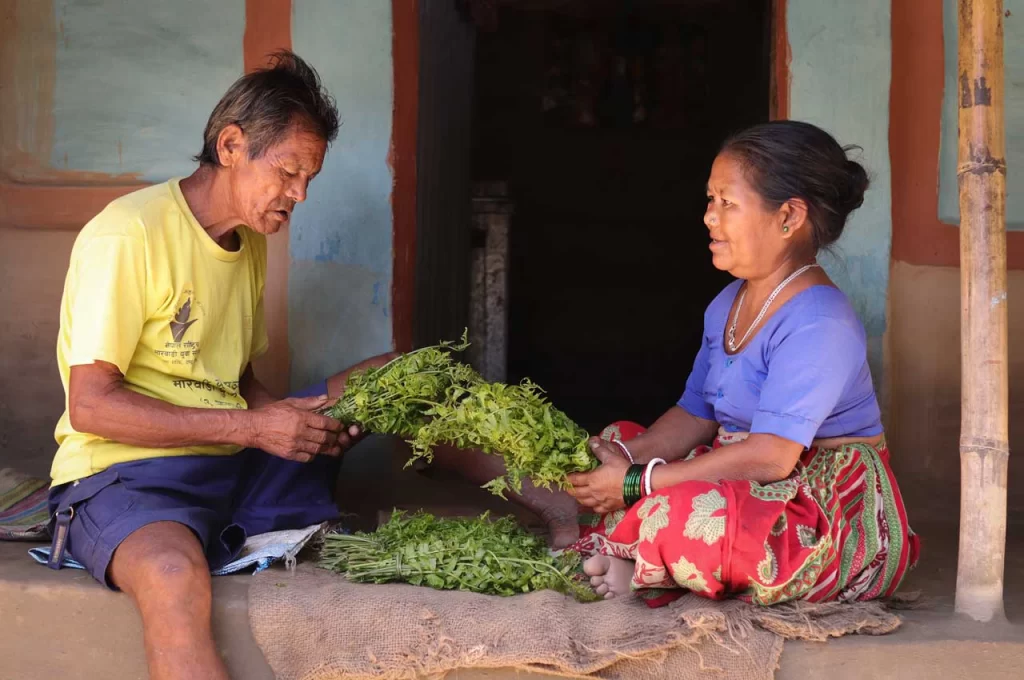- Baradashi Rural Municipality, Jhapa
Mr. Garamlal, 66, has lost count how many times he has stayed up all night during the monsoon seasons. As soon as it starts to rain, he looks for plastic sheets to cover his handful of belongings. He spends the night scooping out water seeping in through his walls. Winter can be just as harsh for him and his 61-year-old wife. As temperature drops, the elderly couple struggles to sleep on their cold mud floor. They spend all night stoking the fire to keep their room warm. The fire is a necessity but an ever-imposing risk to their sticks and thatched house. The house does not have a proper door and the walls are crumbling. Several generations of Garamlal’s family spent their lives in this house located in the eastern lowlands of Nepal.

The couple’s main source of income is their daily wage for labor work. They earn less than USD 5 per day when they get a chance to work. Occasionally, they forage for edible ferns from the nearby forest to sell in the market. The couple seems resigned to their fate. Solid houses that protect people from bad weather and keeps their belongings safe from intruders while they are away are what other people live in. For them, it is not even a dream worth conceiving.
Rajbanshi tribe is the indigenous tribe mostly inhabiting in Nepal’s southern plains known as the Terai region. Their main occupation is farming and cattle raising. There are about 115,000 Rajbanshi people in Nepal. Many Rajbanshi families live on lands that are not registered in their names. Some of them are squatting on private lands while a majority has been living on government lands. Rajbanshis prefer to live-in close-knit groups that are bound together by ancestral ties. The literacy rate is quite low among Rajbanshi people. Their sources of income mainly include fishing, selling puffed rice, and daily wage labor.


